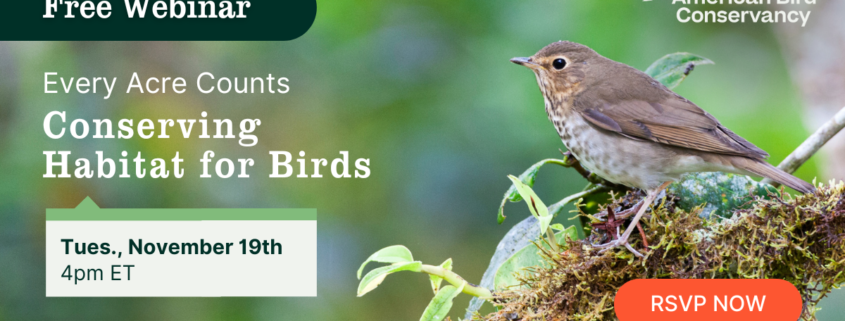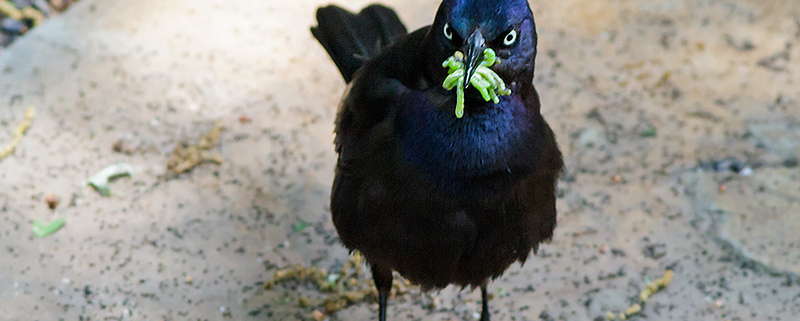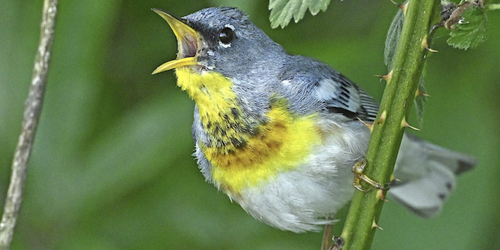Every Acre Counts: Conserving Habitat for Birds, Webinar, November 19th
Tuesday, November 19, 2024
4 – 5 pm
Zoom link provided upon registration.
Free. Register here.
American Bird Conservancy (ABC) has conserved millions of acres of habitat for birds like the Swainson’s Thrush, Golden-winged Warbler, and the rare Cundinamarca Antpitta over the past 30 years. But there is much more to be done: Habitat loss is the most urgent threat facing wild birds today.
Habitat conservation is essential for bird conservation — and the good news is, you can help, whether it’s working in your own neighborhood or supporting establishment of a reserve that spans thousands of acres.
Join ABC to explore how they’re conserving land for birds, from one acre to 10,000 — and how you can, too. You’ll learn ways to minimize pesticide use in backyards and about how ABC is helping to do the same on agricultural land. Looking farther afield, you’ll find out how ABC is improving critical bird habitat with landowners and public land managers in the Great Lakes, and their efforts to establish reserves with partners in Bolivia that benefit Endangered resident birds, such as the Red-fronted Macaw and Palkachupa Cotinga.
You’ll discover how every bird-friendly action, whether big or small, can make an impact on the habitat birds need to thrive. Join them and get inspired to take bold action for birds!
You’ll hear from ABC experts and partners, including:
• Edward Hardy Kern, Director of Government Relations, Birds and Pesticides Campaign
• Jayme Strange, Northern Forests Conservation Delivery Network Coordinator
• Marcelo Tognelli, International Project Officer
If you can’t make the webinar live, RSVP now and they’ll send you a recording to enjoy when the time is right for you.




